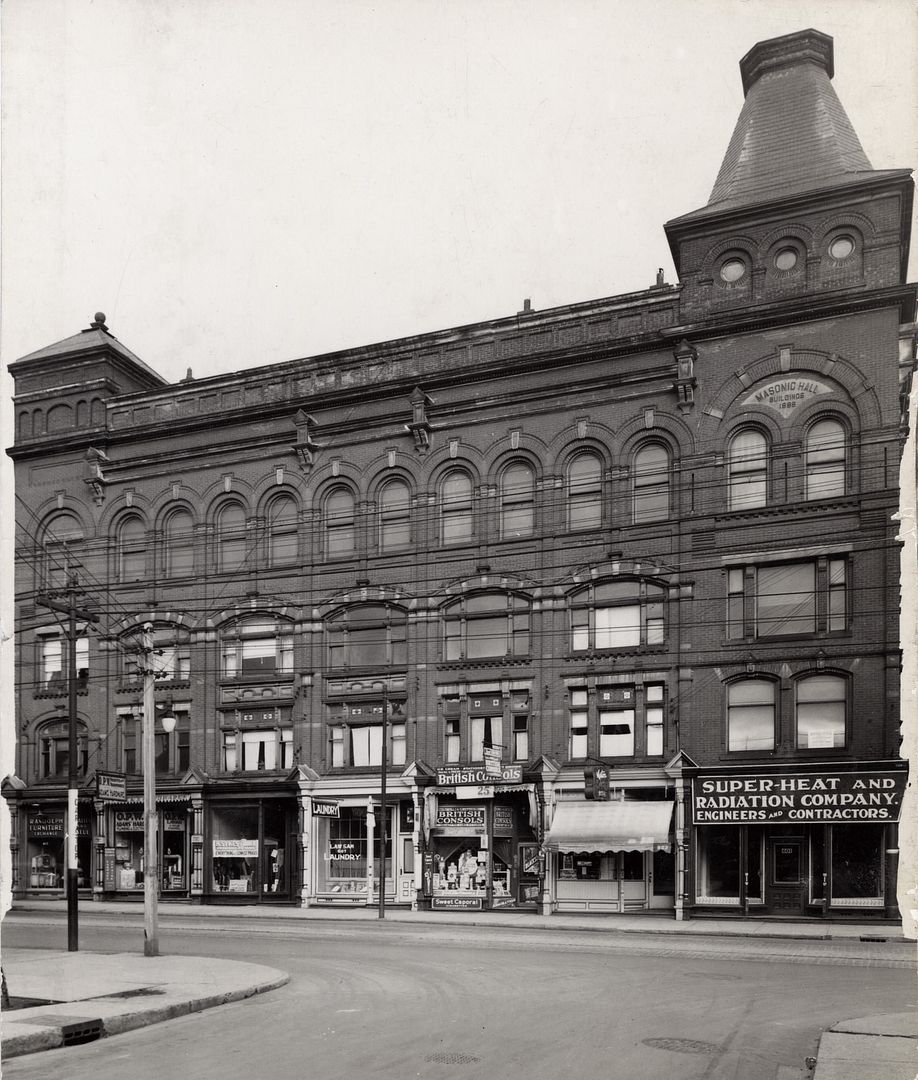Goldie
Senior Member
http://urbantoronto.ca/forum/showth...3906&highlight=yorkville+town+hall#post223906
Goldie, re: your request, page 8 of this thread.
Thanks for the reminder, Mustapha.
That previous page has a wealth of great images!
http://urbantoronto.ca/forum/showth...3906&highlight=yorkville+town+hall#post223906
Goldie, re: your request, page 8 of this thread.
indeed !!That previous page has a wealth of great images!


Thanks for the reminder, Mustapha.
That previous page has a wealth of great images!
Let me say it again: This thread has been going so long that the "nows" have become "thens".
indeed !!
mustapha, that link back to the earlier page in this thread -- well before i joined the forum -- was fascinating
i thought you might be interested in a more recent photo for one of the locations --
here's a picture of that same wall taken this past august --

sorry, i did not stop long enough to inspect the artwork, but it sure looks like a mosaic, doesn't it?
i took the picture because of the message which seems to have been sponsored in part by the city of toronto
and also because, yes, that's a QR Code in the corner







A good number of buildings have been removed, which is too bad.
You really get the feeling that in 1909 Fort York wasn't "preserved", it hadn't "survived"; it was just there, a leftover from previous era. Witness the adjacent lumber yard, the rough dirt road.
Did it still have a military use then?
A good number of buildings have been removed, which is too bad.
You really get the feeling that in 1909 Fort York wasn't "preserved", it hadn't "survived"; it was just there, a leftover from previous era. Witness the adjacent lumber yard, the rough dirt road.
Did it still have a military use then?
Well, let's remember that the fort's restoration came from the same era that gave us Colonial Williamsburg. Such cleaned-up "perfection" was de rigeur then (and is as much of a "historical artifact" in its own right today)
I believe most of the military functions had been moved over to the Stanley Barracks over on what is now the CNE grounds.
I also remember from my volunteer days at the Fort that one of the buildings--and it actually encroached within the bounds of the original fort on the northeast side--was an abbatoir. Quite possible it's one of the buildings we see in the photo.




